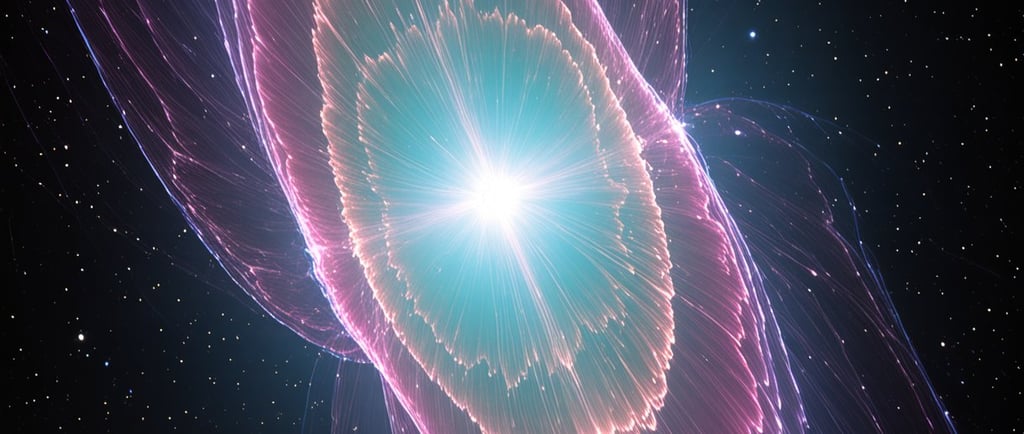The IC 3568: Lemon Slice Nebula


Introduction to the Lemon Slice Nebula
The Lemon Slice Nebula, known for its unique shape and vivid colors, is a fascinating example of a planetary nebula. Situated approximately 4,500 light-years away in the constellation Camelopardalis, this young nebula captivates astronomers and space enthusiasts alike. Unlike other Nebulae, the Lemon Slice Nebula showcases a structure that resembles a lemon slice, hence its intriguing name.
Formation and Characteristics
The formation of the Lemon Slice Nebula is a testament to the life cycle of stars. It is created during the later stages of a star's life when it expels its outer layers, resulting in a beautiful display of luminous gases and dust. The young nebula is composed mainly of hydrogen and helium, illuminated by the remaining core of the star at its center. This core radiates ultraviolet light, causing the surrounding gases to emit a vibrant glow that we observe as the nebula's distinct color.
One of the remarkable features of the Lemon Slice Nebula is its highly structured and asymmetric shape. This is partly attributable to the star's rotation and the influence of magnetic fields, which create intricate patterns. As we observe this planetary nebula, astronomers can glean vital information regarding the dynamics of stellar evolution and the processes that govern the behavior of gases in space.
The Importance of Studying the Lemon Slice Nebula
Studying the Lemon Slice Nebula and similar celestial phenomena is crucial to understanding the broader universe and the lifecycle of stars. By analyzing the light emitted from the nebula, scientists can extract data about its composition, temperature, and the velocities of the gases within it. This information helps elucidate the evolutionary processes of stars and the impact of planetary nebulas on the interstellar medium.
Moreover, the Lemon Slice Nebula serves as a natural laboratory for exploring fundamental astrophysical concepts. The study of young nebulas can enhance our knowledge of stellar formation and the conditions necessary for the birth of stars. As we delve deeper into the complexities of these celestial bodies, we might uncover the environmental conditions that could support life beyond Earth.
In conclusion, the Lemon Slice Nebula stands as a testament to the intricate beauty of the cosmos. Its youthful, yet meticulously structured characteristics offer invaluable insights into the lifecycle of stars and the evolution of the universe. As we continue to expand our horizons in the field of astronomy, the Lemon Slice Nebula remains a significant focus of research and discovery.
